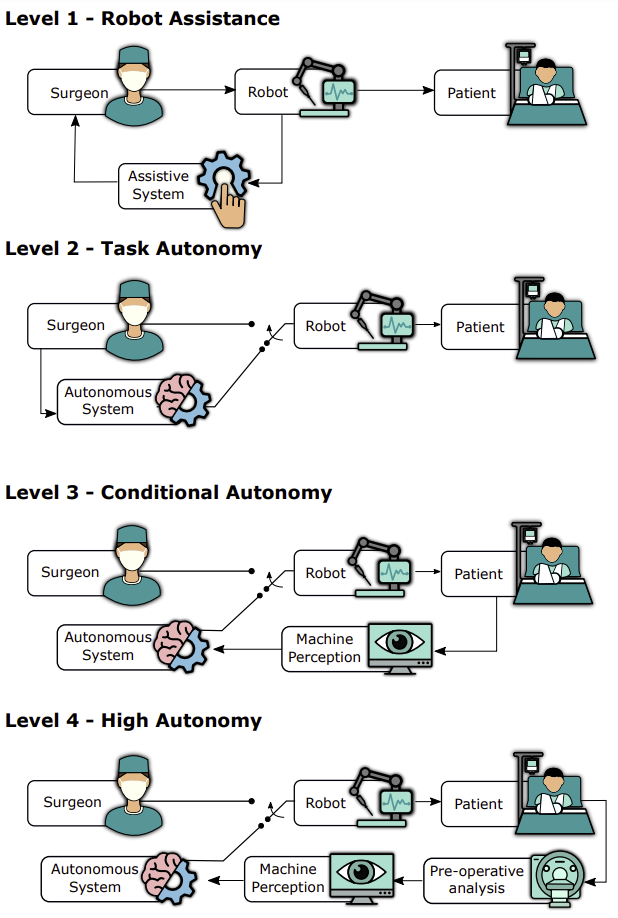
Starting from the autonomotive field, the topic of autonomy in robotics has been largely debated by the research community. In particular, the last 20 years have seen the rise of autonomous surgical robots as a result of an increasing interest by the community and the availability of robotic research platform.
In this paper, starting from the definition of levels of autonomy reported in [1], a thorough analysis of the current state of the art is carried out. Our aim is to further specify the boundaries for each level of autonomy, categorising the currently available state-of-the-art approaches giving examples of both commercially available systems and research prototypes. With this analysis we define what are the already available technologies in surgical robotics, what are the next ones to be implemented in future systems and which ones are still far from being commercialised. Concluding, the paper deals with the ethical and regulatory issues which may arise adopting autonomous technologies that tend to swap the responsibility of an intervention from the human operator to a machine.
[1] Yang, G. Z., Cambias, J., Cleary, K., Daimler, E., Drake, J., Dupont, P. E., Hata, N., Kazanzides, P., Martel, S., Patel, R. V., Santos, V. J., & Taylor, R. H. (2017). Medical robotics-Regulatory, ethical, and legal considerations for increasing levels of autonomy. Science Robotics, 2(4), [eaam8638].
https://www.annualreviews.org/doi/full/10.1146/annurev-control-062420-090543
